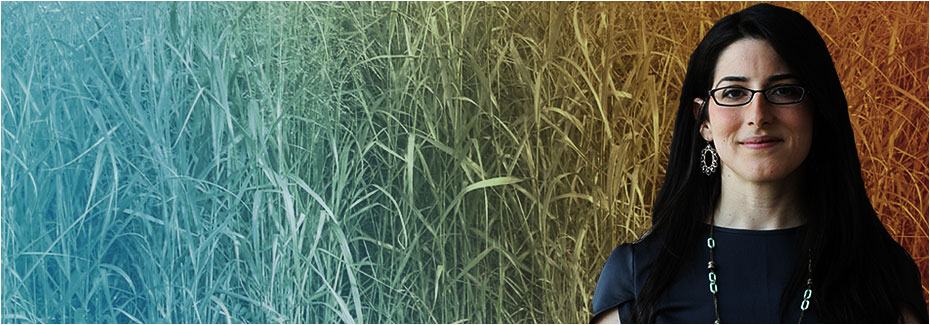GAINESVILLE, FLA. — Computer engineering professor Alina Zare was already working to improve the sustainability of biofuel plants. As the co-principal investigator on a Department of Energy (DOE) project, she was creating image processing and machine learning algorithms to analyze the roots of switchgrass plants cultivated across a diverse range of environmental conditions.
By analyzing images and extracting the root parameters and characteristics from individual plants, her algorithms could autonomously figure out the most efficient way to scale up to understanding larger numbers of plants and assembling more pieces of the research puzzle. Results of her algorithms could be paired with additional information, such as environmental and soil conditions, to understand and predict how different varieties of switchgrass will thrive in future climates.
The current methods for collecting root data come with built-in limitations. Sending cameras down glass tubes inserted into the soil only captures a discrete point of information and the intrusion can change the behavior of roots. A process known as “shovelomics,” which involves removing a root crown from the soil and examining it manually, causes a loss of structural information and root breakage, and it can’t be used to collect data over time. Growing plants in a controlled laboratory with prepared soils or gels that allow for visual imaging of the roots isn’t helpful when you are looking for data on the sustainability of a plant in a natural environment.
Zare wished there was a way to image the plants in the field without penetrating the soil, if only to have a baseline for how disruptive different root data collection methods might be. A colleague recommended backscatter imaging and suggested she reach out to Jim Baciak.
Baciak, a University of Florida materials science and engineering professor and director of the UF nuclear engineering program, developed the Aurora Xi with industry partners for the express purpose of imaging and analyzing railroad ties to detect rotten wood and optimize track maintenance. The backscatter x-ray technology and its mobile platform – it is integrated on a hi-rail vehicle that can move along train tracks – earned Baciak an R&D 100 award. Talking with Zare, Baciak quickly agreed that if the technology could be paired with farm equipment, it could enable high resolution imaging of plant roots – without disrupting plant or soil.
Zare and Baciak recently received a $6 million award from the DOE’s Advanced Research Projects Agency – Energy (ARPA-E). Their research team includes experts from University of Missouri, University of Texas at Austin, Argonne National Lab, University of Washington, Donald Danforth Plant Science Center and the University of Illinois at Chicago. The three-year project is part of its Rhizosphere Observations Optimizing Terrestrial Sequestration (ROOTS) program, which seeks to develop root-focused cultivars optimized for carbon sequestration that can reduce atmospheric CO2 concentrations while offering other productive and sustainable benefits. Zare, the principal investigator, says their project is distinctive in its novel approach to collecting root data.
“What’s so groundbreaking about the technology our team is developing is that, well, it’s not groundbreaking,” says Zare. “We’re disrupting the work by not disrupting the plants or the soil.” She thinks the ten different ROOTS projects – which include teams led by Stanford and Texas A&M – will have a lot of synergy with each other. Ultimately, she and Baciak hope to commercialize their imaging system for companies engaged in relevant agricultural work.
“Breeding plants for desirable traits dates back to the earliest of human farmers, but breeding for optimal root conditions is new territory,” said Baciak. “Our goal is to produce the technology that enables farmers to look at root systems and breed stronger and more sustainable biofuel crops – and any other matter of plants that will benefit our society.”
Prior to and concurrent with her work in the plant world, Zare specializes in using machine learning for landmine and seamine detection. In particular, she works with ground penetrating radar, electromagnetic induction sensors, and synthetic aperture sonar to create algorithms for target detection. She has also developed algorithms for hyperspectral image analysis, which exceed the visible spectrum and can offer information about material characteristics when they are not visually apparent. Her hyperspectral analysis work has been applied to landmine detection, automated scene understanding from airborne or satellite imagery, and forestry applications.
“I’m working with plants and agricultural applications, forestry and ecology, with the Army and the Navy,” says Zare. “That’s the exciting thing about machine learning in general, you get to learn so much from all the different application areas.”
